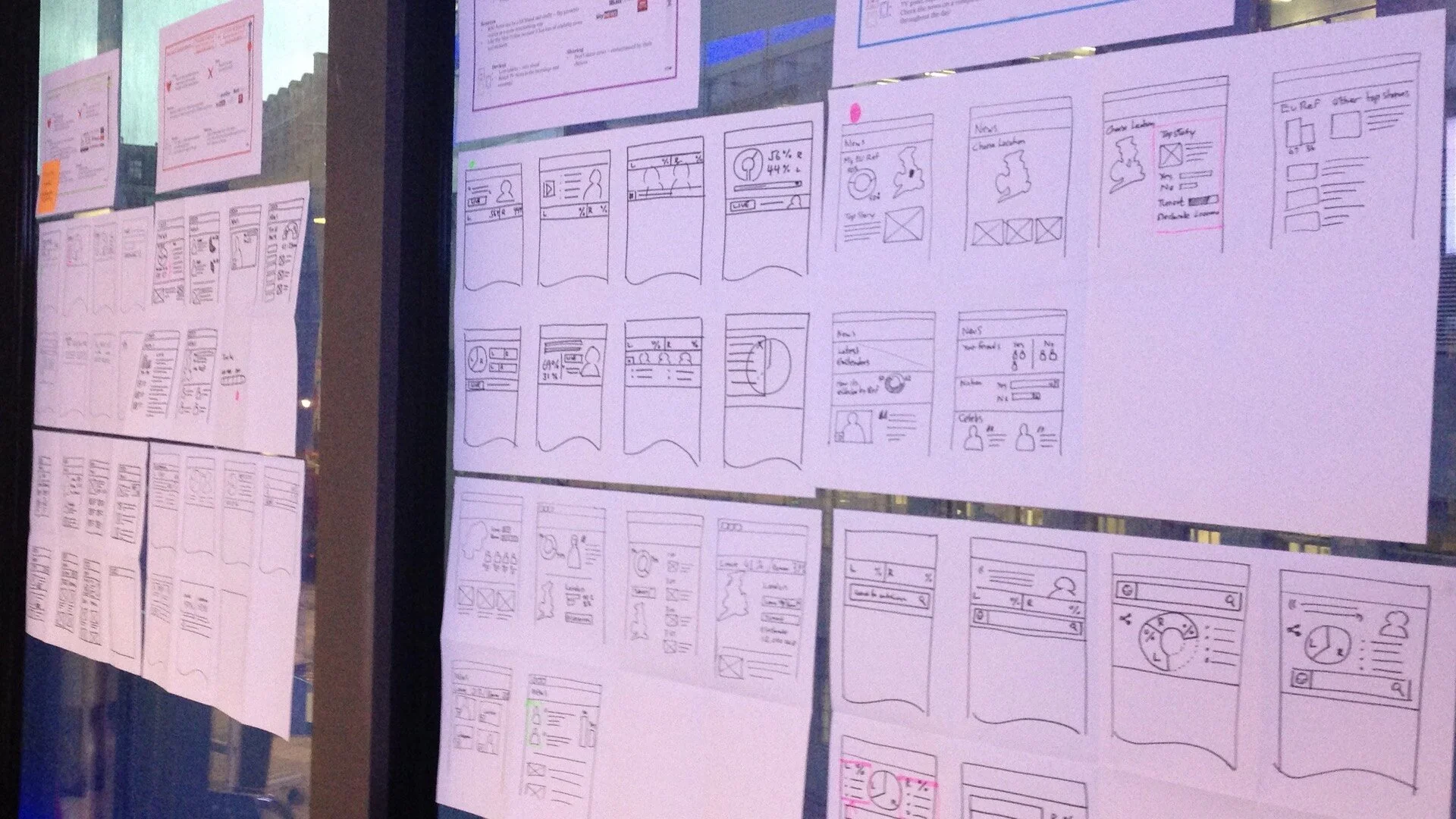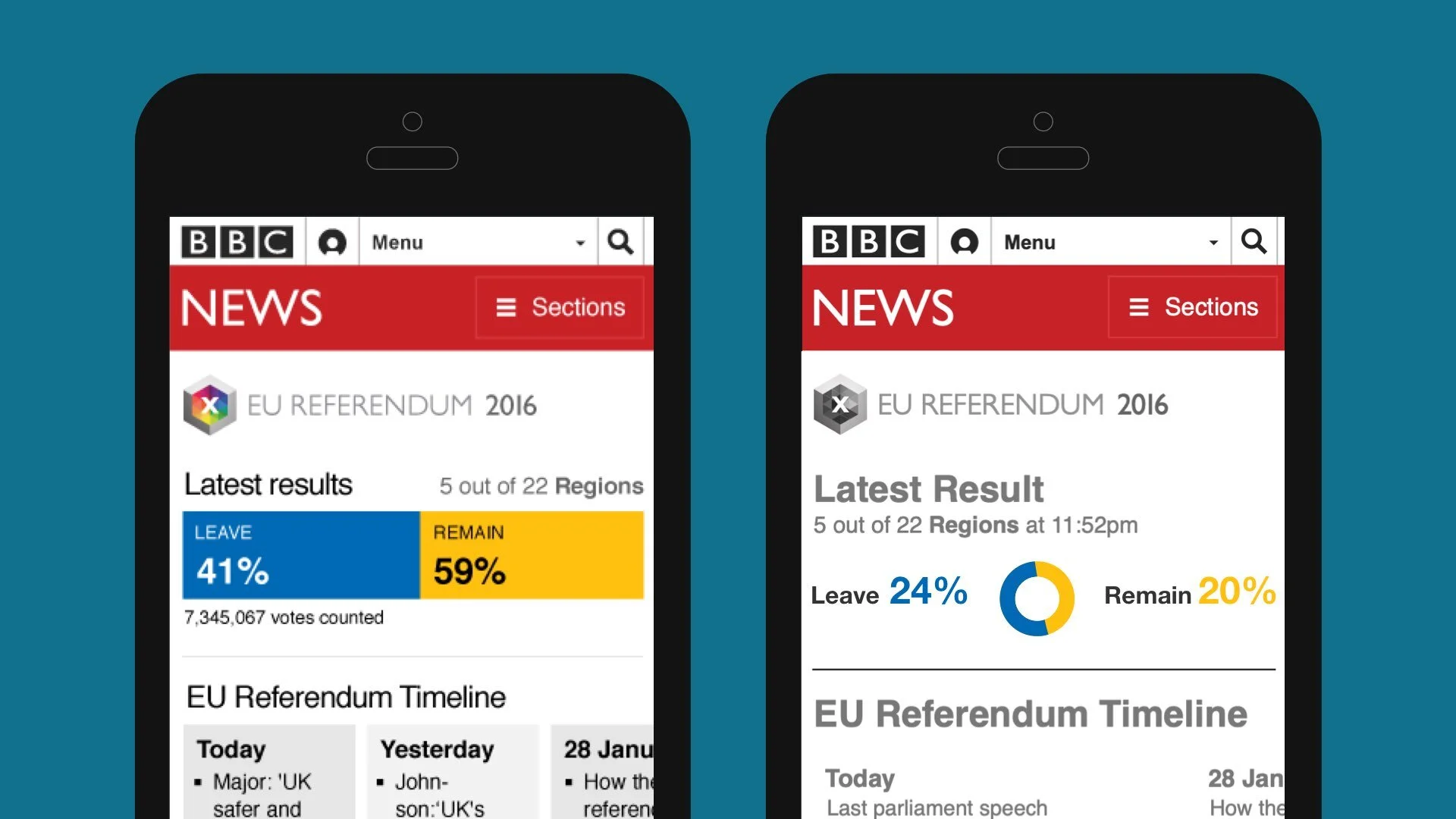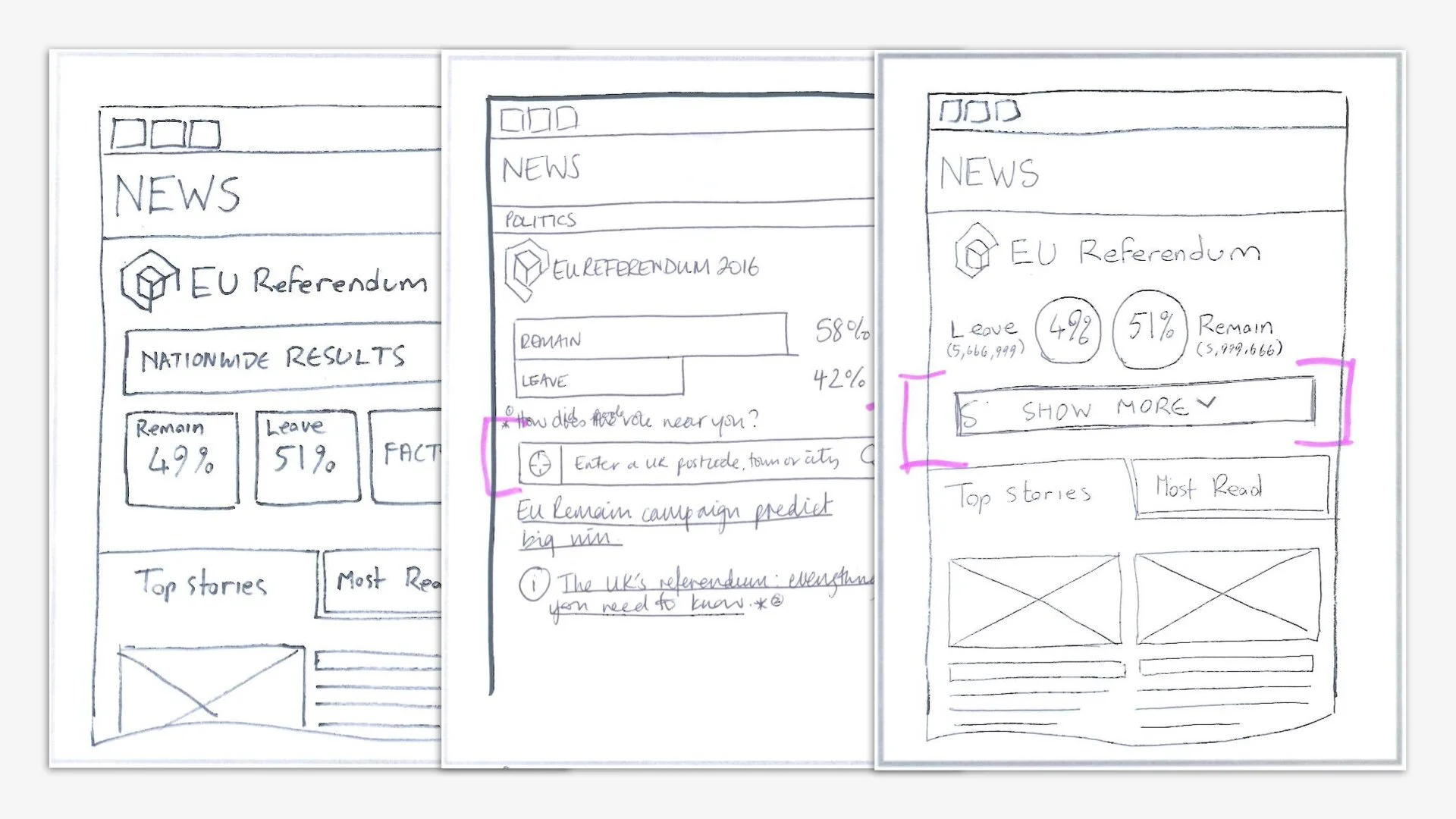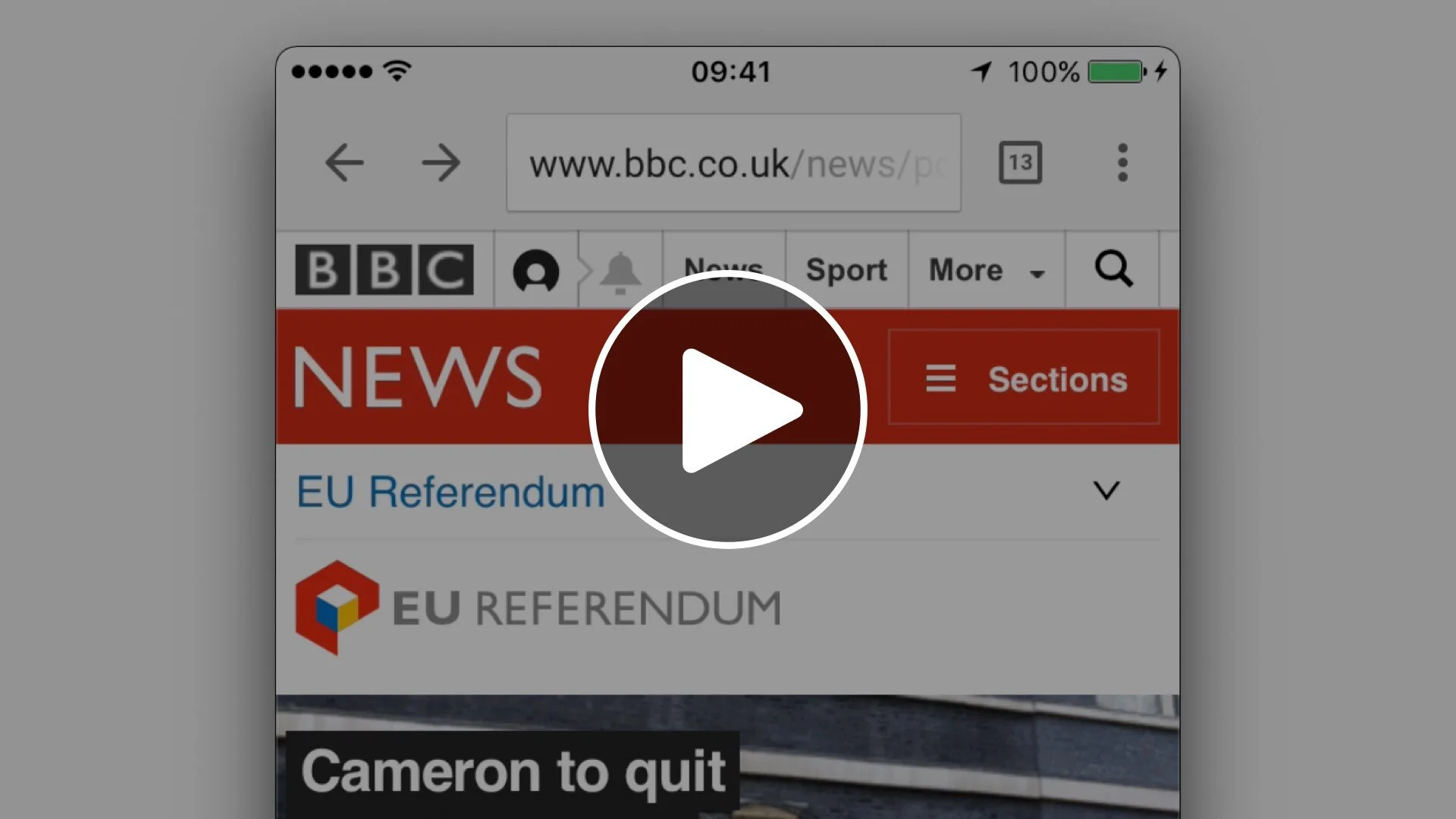Case study
BBC News EU Referendum banner
Project summary
As the whole of the country went to the polls to decide the UK’s future in the European Union, the Politics team endeavoured to provide a results service that informed and educated users about the EU Referendum. While the online coverage was based on existing BBC News Election templates and components, it was imperative for the team to remain mindful of the distinct nature of this particular referendum and deliver a tailored service that reflected the unique experience.
Role: User experience designer
Tasks: Competitor analysis, user flows, storyboards, sketching, wireframes, prototyping, final design, research, dev pairing
Approach: Research and insights, competitor analysis, personas review, user flows, sprint 1: multidisciplinary investigation, sprint 2: UX refinement, final refinement, dev review, release
The challenge
Investigate creative and editorial opportunities for the EU Referendum results banner. The banner must present live results data in an imaginative but digestible format, ensure users have access to key information at a glance, and provide an impartial view of the referendum.
Research
The available research on referendums was limited. However, we did have access to some feedback about the General Election and Scottish Independence Referendum services.
We were able to glean a few useful insights from these previous reports, which proved useful for the EU Referendum design sprints we conducted at a later time.
Competitor analysis
Competitor analysis focused on a variety of news providers and government and local authority sites. I helped analyse how they reported on elections and reviewed the types of features they used to enhance the user experience.
The main objective was to identify interesting or creative ideas that could influence the direction of BBC News when creating the EU Referendum results banner.
Personas
Due to the size and nature of the BBC audience, BBC News researchers have developed a set of personas to help the various BBC News workstreams understand the diverse range of user behaviours.
In the case of the EU Referendum, it was imperative for me to review every user type, and also to ensure that all members of the politics team had a good grasp of the variety of user needs we were catering for.
User flows
I also created user flows that focused primarily on the high-level journey (entry points, page types, gaps in journey, etc.). It also helped establish where users would expect to see the results banner.
Sprint 1: Multidisciplinary investigation
The first sprint we conducted involved various members of the politics team from editorial, engineering, product, research, and UX. We collected a variety of ideas from different perspectives.
We first created How Might We (HMW) questions to help identify opportunities. We then identified the most promising themes from the HMWs, prioritised them, and mapped them to BBC News persona behaviours.
Using Crazy Eights, we sketched ideas for each persona before discussing, refining, and dot voting the most promising ideas.
The final stage of the sprint was to paper prototype the most promising ideas and Guerrilla test with members of the public.
Sprint 2: UX refinement
The second sprint was a more limited affair involving UX only, where I spent the first period reviewing the key insights from the Guerrilla testing.
There were two ideas that users seemed to gravitate toward: the first was a standard two-sided bar chart with a timeline; and the second was a circular (donut) data visualisation of the two possible referendum outcomes.
We further investigated these options and presented high-fidelity paper prototypes to research participants and stakeholders. Given that the referendum was a yes/no election, the simple nature of both ideas was clearly understood at a glance. However, it was the softer, friendlier nature of the circular version which appealed to most users.
Final refinement and delivery
The last task was to make a few refinements to the final idea, including halving the donut to make better use of the space across breakpoints. We also needed to investigate the different banner scenarios. Finally, we touched base with engineering, enabling us to update the developers on the feedback from the second sprint and prepare for the final build and delivery.
Results and outcomes
The EU Referendum results service saw one of the biggest audience peaks for BBC News between 2011 and 2019. On results day, BBC News was attracting more than 21 million unique browsers and 114 million page views worldwide.
Initial feedback showed high audience satisfaction, with users being particularly happy with the clear and prominent display of the key facts. We managed to gain some valuable insights from user feedback, which I was able to use in subsequent election results banners.










